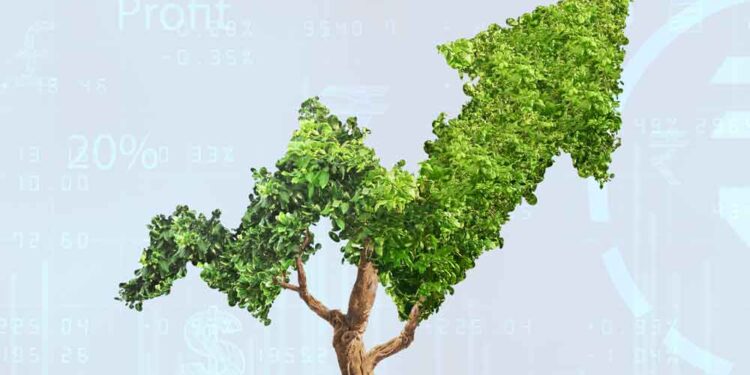Exports, manufacturing, and FPIs boost Covid-stricken economy
By Shashi Kumar Jha
The second wave of Covid-19 has dissipated after causing widespread devastation. Barring a few states in the South and Northeast, the government has been successful to a great extent in controlling it, even though the threat of a third wave is still looming large. The good thing is that the economy is slowly showing signs of recovery and the recovery seems to be faster after the second wave than after the first wave of the pandemic. On the economic front, the country’s biggest hope revolves around the exports and manufacturing sectors, which have performed well.
Compared to the previous year, exports tripled to $30.21 billion in April this year and $35.2 billion in July. Orders have picked up since April, due to which exports have remained buoyant.

The second major boost to the economy came from the manufacturing sector, which hit a three-month high on increasing new orders, exports, purchase volumes and inputs. Increasing number of vaccinations and decreasing infection and lockdown also accelerated the influx of Foreign Portfolio Investors (FPIs) into the country; they invested Rs 60,000 crore during the first six months of the year and boosted hopes of recovery in the economy.
“With the lifting of restrictions, there was a rapid recovery in retail sales. Improvements in health care, pharma, IT, media and telecommunication sectors have led to increase in employment.”
Sanjay Aggarwal, President, PhD Chamber of Commerce
In the first six months of the year, the Sensex rose by about 10 percent, or 4,723 points. On August 18, the stock market touched an all-time high of 56,000 points, riding on multiple factors such as the decrease in inflation rate, foreign exchange reserves rising to $620 billion, acceleration of the vaccination drive in the country, increase in cash flow in the market, and above all, good results of companies in the June quarter.
Another pleasant aspect of the boom in the manufacturing sector was seen in the employment sector, which showed strength for the first time in the last 16 months. According to a survey, this strength shows that the confidence of the manufacturing sector, which had been shaken by the lockdown, is being restored.
In July, signs of recovery were visible in the form of factory activity on the back of rising domestic and international demand. The opening up of the economy strengthened both demand and sales. The reforms in the manufacturing sector have prompted the creation of new jobs for many companies that were struck by the second wave of the pandemic.
According to Finance Minister Nirmala Sitharaman, with growth assuming the top-most priority, monetary policies are being framed accordingly.
The Manufacturing Purchasing Managers’ Index (PMI) compiled by IHS Markit rose to 55.3 in July, compared to 48.1 in June. Notably, a level above 50 on this index is considered growth. According to Pollyanna De Lima, Economics Associate Director at IHS Markit, the survey confirms that output grew faster and more than a third of companies displayed monthly expansion in production as Covid restrictions eased and business improved.
Similar optimism is shared by the Nomura India Business Resumption Index, a weekly tracker of economic activity. This index includes mobility, electricity demand and labour force participation rates. The index reached 99.4 in the week ending August 8, which is close to the pre-Covid level (100) as against 94 in the previous week.

“One cannot manage a team scattered around the country or the world in the same way and with the same tools as she/he did before. So, the need of the hour for organisations is to reinforce an agile and innovative work culture, irrespective of the pandemic.”
Ashley Fernandes, Country Head, Emlyon Business School, France
The Reserve Bank of India (RBI) has also said in its recent report that beginning with the unlocking process and the spurt in vaccination activities, there is improvement in demand and supply conditions and the monsoon is near normal, which have all led to betterment in the performance of the manufacturing and service sectors. So far, 1,427 listed NBFCs have declared their financial results, which account for 86.3 percent of the market capitalisation of all NBFCs in India. The RBI also appreciated the way the corporate sector has dealt with the second wave. E-way bill collection during this period is at the highest level in the last four months. Average daily e-way bill generation in July was 14 percent higher than the June level and 60 percent higher than in May, indicating that the August collections will be higher.
Another reason for relief for the government and the economy was the GST collections, which increased from Rs 92,849 crore in June to Rs 1, 16,393 crore in July.
Of course, though these signs of improvement in the economy are currently visible, fear of a third wave striking remains. Credit growth has still not picked up pace and industrial production has also remained at pre-Covid levels. Given the paucity of available financial resources, there is a dire need for the government to pursue regulatory reforms related to labour and land, as well as to harness the immense employment potential in the manufacturing sector.
(The author is a senior journalist.)








